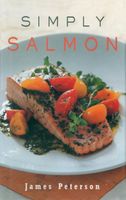Advertisement
Stomach Method
Appears in
Published 2001
Make a diagonal cut at the base of the salmon’s head in the same way described in the previous method. Make a crosswise slit at the top of the tail—just where the flesh starts—and then slide the knife up from the tail along the belly side of the salmon, keeping the knife flush against the bone, until you reach the belly opening. Fold back one of the salmon’s stomach flaps as best you can. With a boning knife or small chefs’ knife—don’t use a flexible knife at this stage—cut through the top row of ribs where they join the backbone. You may have to use a quick jerking motion because the bones are somewhat hard to cut through. Don’t let the knife penetrate behind the bones or you’ll cut into flesh. When you’ve cut through all the bones, switch to a flexible knife and slide up the length of the salmon, starting from the tail end and working up to the head and keeping the knife flat and flush against the backbone so you don’t cut into any flesh. Fold back the top fillet as you go and remove it completely.

